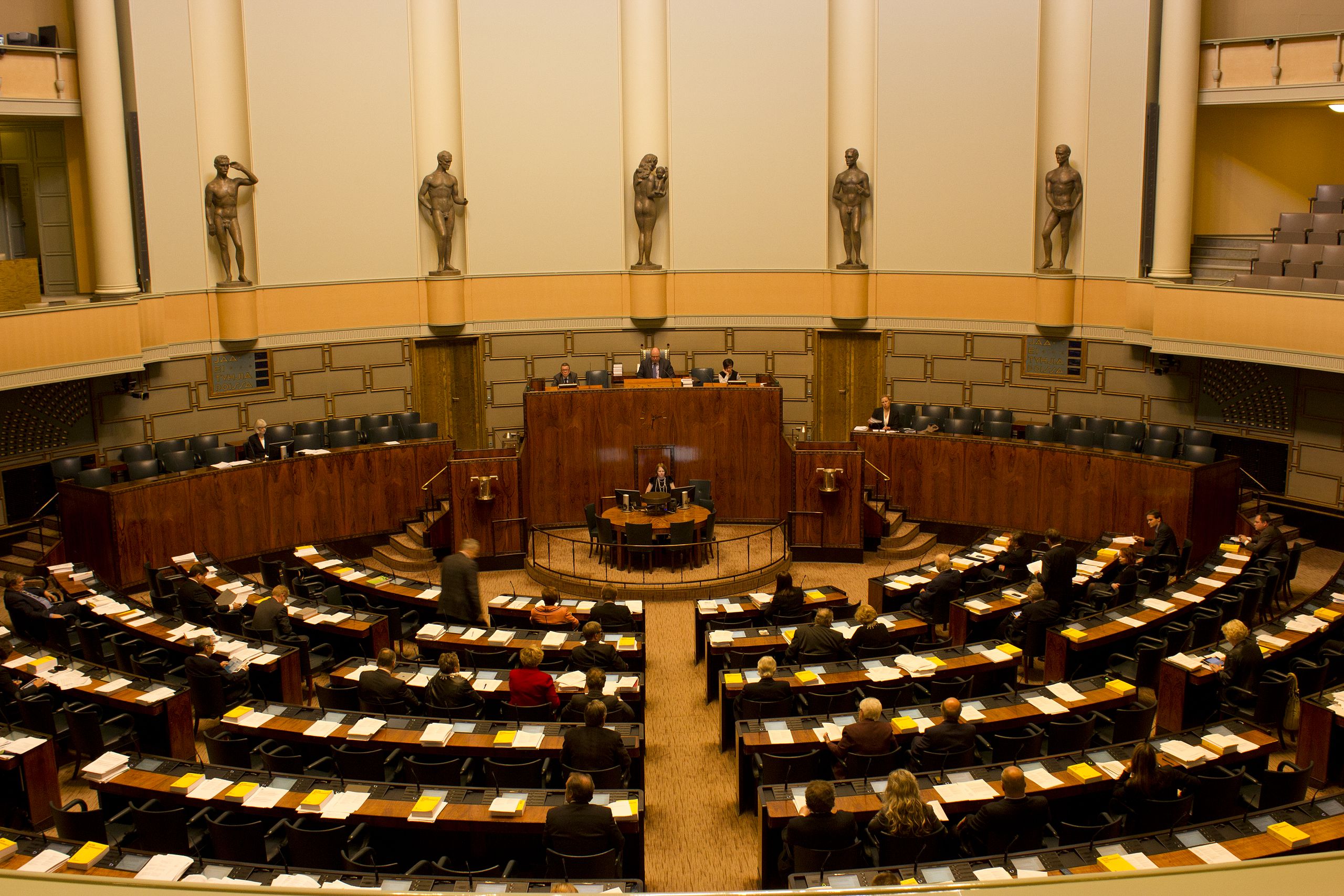After Scotland’s GRR bill passed news that Self ID in Finland may also be on the horizon dropped so we asked a Finnish trans writer to tell us about it and the wider context it exists in. Vilja Heikkilä writes;
Finland is, finally, reforming its trans act which would make us one of those terrifying self-ID countries where gender anarchy reigns. However, both the details of the Self ID in Finland and its starting point are something which deserve to be brought to attention beyond the Finnish-speaking sphere.
So, crash course. The current trans act is nearly as old as I am, dating to 2002, aptly named “Act on legal recognition of the gender of transsexuals”. It lays out requirements for a person to have their gender legally confirmed. In short, they have to be at least 18 and present three medical statements in total.
One stating their infertility, and two stating they permanently identify as the “opposite gender” and living in the corresponding gender role. That almost makes it sound easy, that is, if you ignore the legacy of eugenics behind the infertility requirement.
The infertility requirement is the most heavily criticised by supporters of Self ID in Finland as it unambiguously violates human rights. Whenever it is brought up though, especially when referred to as forced sterilisation, someone is surely to well-actually the conversation stating that no one has been forcibly sterilised and gender affirming treatments often result in infertility anyway.
It is true that at present, a year or so of HRT is enough to have a doctor write up the necessary statement. That is unfortunately far from the actual impact of the requirement. The act has been interpreted in the past and even on some recent occasions as preventing the storage of gametes or even requiring ones already in storage to be destroyed.
Even today, trans people are barred from fertility treatment. As much as some wish to claim that forced sterilisation is a myth, the true impact of that requirement is preventing people from having children they would otherwise be able to have.
The other required medical statements also have further reaching practical impacts than one might expect. Gatekeeping legal gender recognition with medical requirements also imposes restrictions on the medical evaluation and gender affirming care. As a direct result of the act having medical statements as requirements, trans diagnoses and gender affirming care in Finland are not only limited to public healthcare, but to two specialised psychiatric units.
I doubt I need to say anything about insufficient resources here, so I will focus on an equally important issue: power. Trans healthcare in Finland is ultimately in the hands of only a few doctors, and any power being so concentrated leads to likely abuses of it. These clinics have in the past made sweeping policy changes seemingly out of the blue and with no purpose.
The best example being them outright ceasing to provide care for non-binary trans people, citing a “lack of evidence of its benefits”. This ruling was fought and ultimately repealed, though there have been signs of similar policy with identical justifications returning.
This criticism would be incomplete without a mention of the doctor in charge of the unit for adolescents in Tampere, Riittakerttu Kaltiala who spoke in Florida as an “expert in the field” in favour of the anti-trans legislation there that has since been passed.
These are only some of the consequences of the medical requirements for gender recognition. It should be clear why any reform that proposes to maintain any part of that is inadequate and unacceptable
Finally, for the actual reform. The government proposal speaks of an application process, one which requests only a statement that the applicant identifies to permanently belong to the gender they seek to be legally recognized as. Or more simply: Self ID in Finland.
Given that, requirements for medical statements of any kind are being done away with. Self ID in Finland will have the additional effect of allowing the private healthcare sector to start providing trans diagnoses and gender affirming care, as well as fertility treatments becoming finally accessible to trans people. The latter part is affirmed by laws regarding reproduction being amended to recognize that, for instance, not all people who may be pregnant or give birth are female, legally or otherwise.
Though of course, there was always going to be a but; The reform proposal does not suggest a change to the age limit. A decision clearly done to compromise with the most conservative party of the government coalition, the Centre. More on them later.
The journey of the Self ID in Finland thus far has been a display of the usual anti-trans rhetoric, the incompetence of many self-proclaimed allies, and the fact that the improvements of human rights rest on the shoulders of civil activists and their uncompensated labour.
The reform was enshrined in the governmental program in 2019 and it is only now entering its parliamentary hearings. Something hailed as one of the important human rights projects of this government has taken until the eve of the next election to, hopefully, come into effect.
This is as a result of numerous delays, starting from establishing the task force to start preparing the proposal. While excuses were given, all this made it clear that despite being a handy campaigning pawn, when it comes down to it, trans rights are relatively far down the list of priorities.
The people who deserve most thanks for pushing the reform forward are not politicians but numerous individual activists and organisations. For one, without them the proposed text would have contained phrases such as “reproductive-biological gender” and been shaped majorly by so-called experts in the field that were discussed previously.
Similarly, in 2021 a citizens’ initiative, Oikeus Olla, was launched as a reaction to the government’s proposal for Self ID in Finland being revealed to not include minors. The petition reached its necessary 50 000 signatures in less than two days, displaying the strength of both popular support for trans rights and citizen activism for them.
At present, parliament has rejected the initiative in favour of proceeding with the government’s proposal for the reform. Despite this, the initiative likely had a necessary and positive impact. Both in adding pressure for the reform not to be forgotten, and in the statement of the parliamentary committee including a clause that the government ought to extend the possibility of gender recognition to minors.
The preparations within the parliamentary committees around Self ID in Finland are a chapter on their own. Briefly, they have requested and received expert testimony among others from the aforementioned doctors, a conversion therapy organisation, a Finnish version of the LGB-alliance (which swears it has no relation to the organisations abroad carrying the same name) as well as an equally tiny and insubstantial organisation of TERFs.
On more recent matters, there was a brief crisis as it appeared the reform was going to be voted down in the committee. For one, the Centre party members withheld their support for Self ID in Finland. From a governmental proposition of a government they are a part of and had previously agreed to support in the committees, despite allowing members to vote “according to their conscience” in parliament.
Entirely unrelated: there is an old Finnish proverb “Kepu pettää aina” meaning the Centre always betrays.
An additional problem was the National Coalition party raising a fuzz about an argument against against self-ID in Finland specifically: male-only conscription. They suddenly became very worried that young men would en masse choose to change their gender marker to female for over a decade to get out of military service.
A matter which had already been settled in previous stages, with the Finnish Defence Forces even giving a statement that it already has protocols, as gender confirmation has been a thing for over two decades at this point.
In short, the issue raised was a non-issue. If you ask me, this was merely a power play by the right-wing party to show their conservative base that they are not just accepting this “left-wing proposition” outright. They eventually settled for limiting gender confirmation to once per year. No one is really sure how that solves any of the issues they raised but with it, the committee voted in favour of the reform, moving it to parliamentary hearings.
This is the abridged Self ID in Finland story thus far. The final vote for the reform is due right next week, at the start of February. There are many details I had to leave out to even pretend to stick to the recommended length, as the story of this “great Northern liberal bastion of human rights” trying to reform its laws to actually comply with those human rights is a painfully lengthy one.
The end of one chapter of gaining Self ID in Finland is near and the outcome appears cautiously optimistic. Perhaps, after all, our future is gender anarchy.











